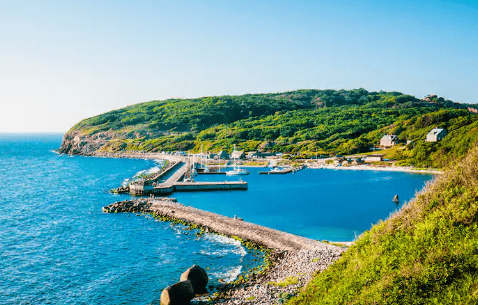What are the most common plants in Denmark?
Potatoes, zucchini and cucumbers are the most common things grown in Denmark. Denmark is a country that can be considered poor in terms of vegetation. Only 10% of its land is covered by forests. The remaining large areas are covered by pastures and land suitable for agriculture. In Denmark, especially for farmers, they leave some of the agricultural land outside so that the wild flowers spread too much for the bees to make honey.
Climate shows the same characteristics everywhere due to the physical structure. The temperature is around 15-17°C in the hottest month and 0°C in the coldest month. The number of rainy days varies between 130-180 days per year. The wettest months are August and October, with an average rainfall of 130-180 mm, and 800 mm in West Jutland. Although the straits between Katlegat and the Baltic Sea remain frozen for months in harsh winters, the Jutland coast is ice-free. The winter and fall months are stormy. April and June are the most beautiful months of the year in Denmark.
Popular plants growing in Denmark

Denmark’s natural vegetation is predominantly characterized by temperate deciduous forests, heathlands, meadows, wetlands, and coastal dune systems. Some of the most common plants found in Denmark include:
- Oak (Quercus robur): The oak is a widespread tree species in Denmark’s forests and woodlands. It is known for its large, broad leaves and can live for several hundred years.
- Beech (Fagus sylvatica): The beech tree is another common species in Danish forests. It has distinctive smooth bark and produces dense foliage, providing shade and shelter for numerous plant and animal species.
- Birch (Betula spp.): Several species of birch, such as silver birch (Betula pendula) and downy birch (Betula pubescens), are found throughout Denmark. They are medium-sized deciduous trees with distinctive white or silver bark.
- Heather (Calluna vulgaris): Heathland areas in Denmark are dominated by heather. It is a low-growing evergreen shrub with small, pinkish-purple flowers that bloom in late summer.
- Meadowsweet (Filipendula ulmaria): Meadowsweet is a perennial herbaceous plant commonly found in Danish meadows, wetlands, and along streams. It produces clusters of fragrant white flowers during the summer months.
- Common Reed (Phragmites australis): Common reed is a tall, perennial grass that thrives in wetland areas, such as marshes and lakeshores. It forms dense stands and provides important habitat for various bird species.
- Sea Buckthorn (Hippophae rhamnoides): Along the coastal regions, sea buckthorn is a common shrub. It has thorny branches and bright orange berries that are rich in vitamin C.
- Sea Holly (Eryngium maritimum): Sea holly is a distinctive coastal plant with spiky leaves and blue or purple flowers. It grows on sand dunes and in sandy soils near the coast.
- Stinging Nettle (Urtica dioica): Stinging nettle is a widespread herbaceous plant in Denmark’s meadows, woodlands, and disturbed areas. It has stinging hairs on its leaves and is known for its medicinal properties.
- Common Reedmace (Typha latifolia): Common reedmace, also known as cattail, is a wetland plant found in marshes, ponds, and along waterways. It has tall, cylindrical flower spikes and provides habitat for various wetland species.

These are just a few examples of the many plant species found in Denmark. The country’s diverse habitats support a wide variety of flora, including both native species and introduced plants.
Popular plants grown in Denmark include Watsonia, Victorian tea tree and other plants.





